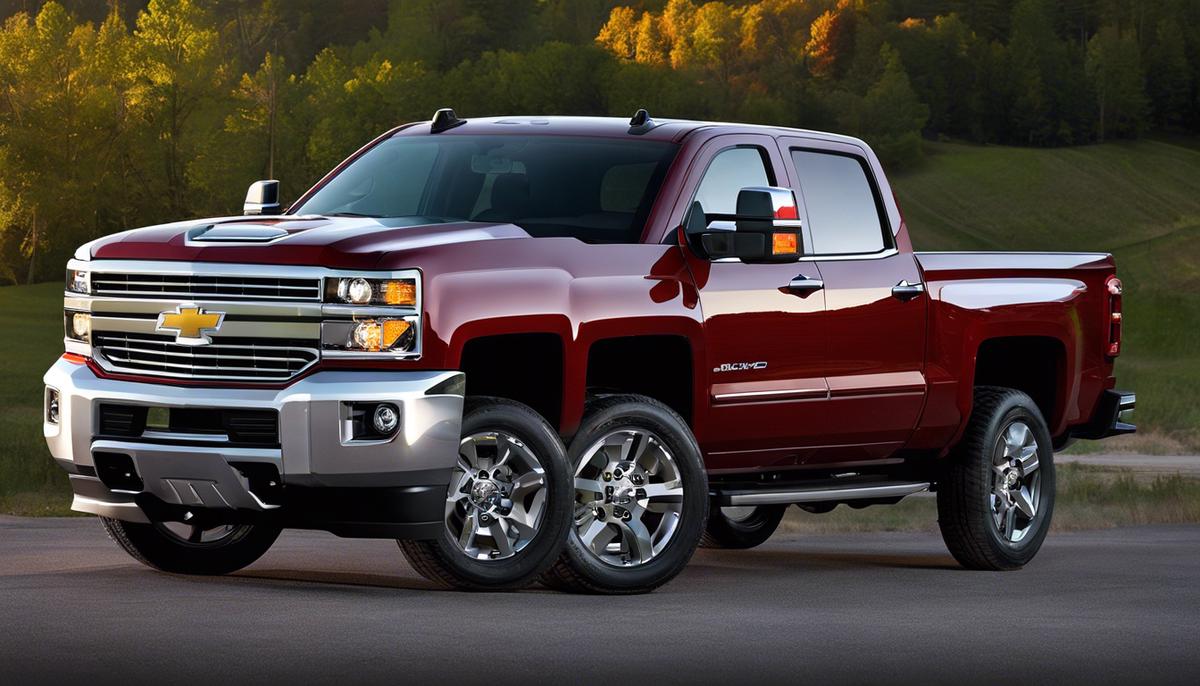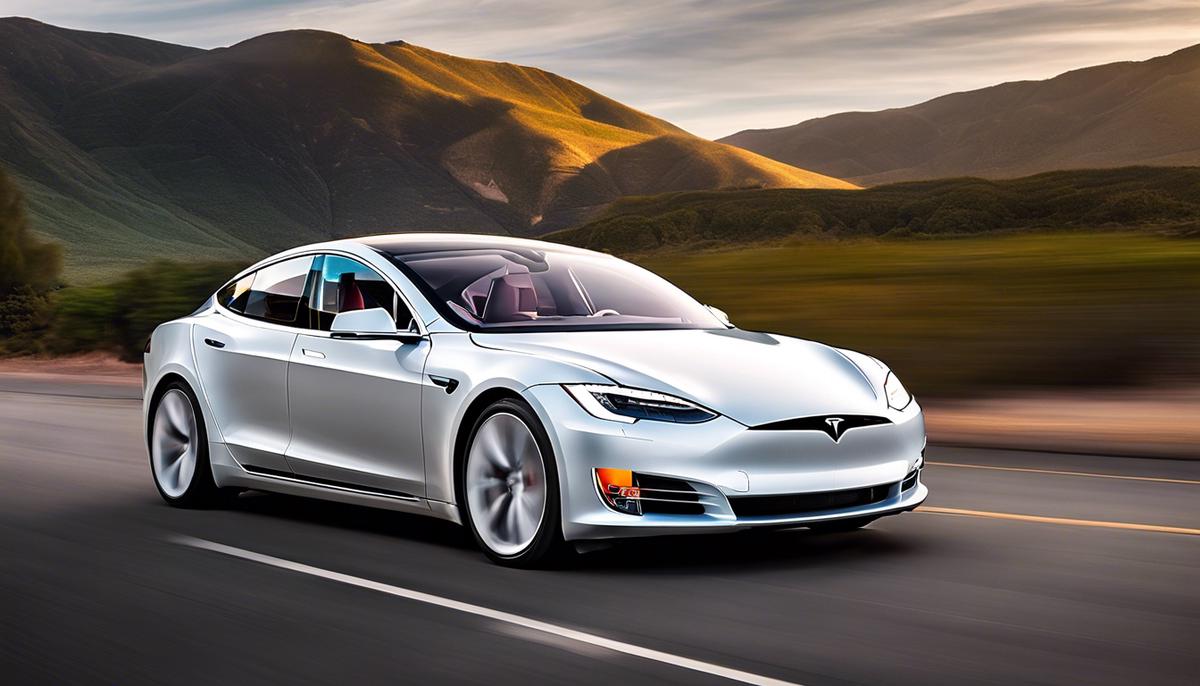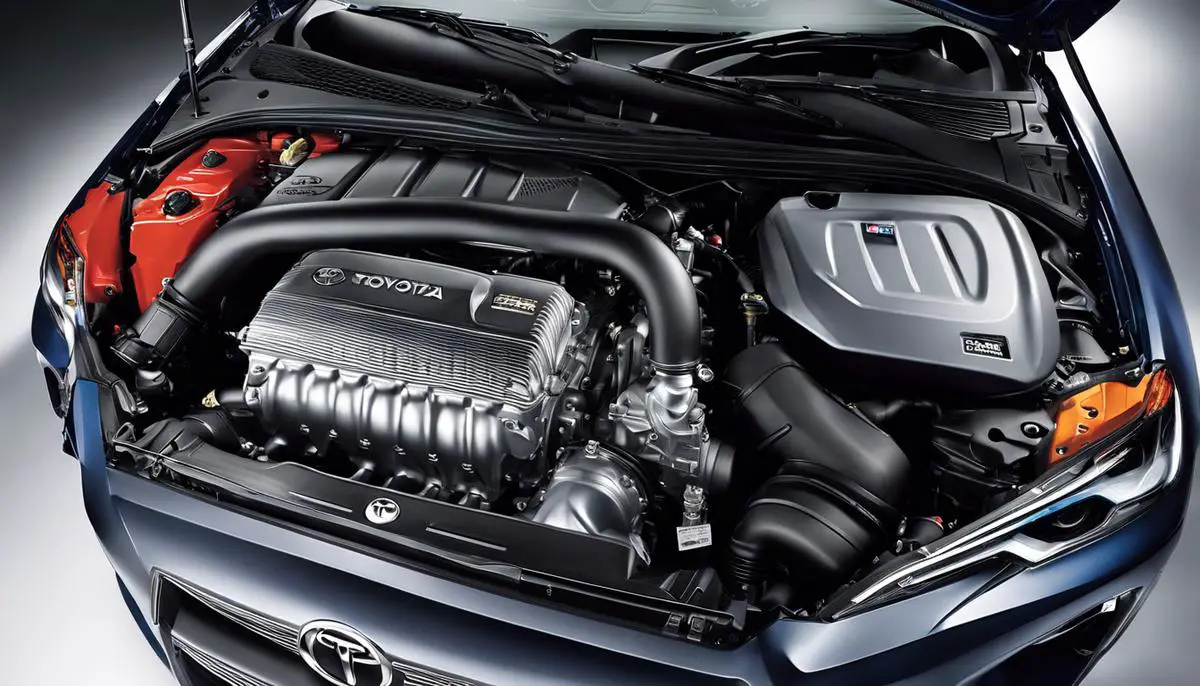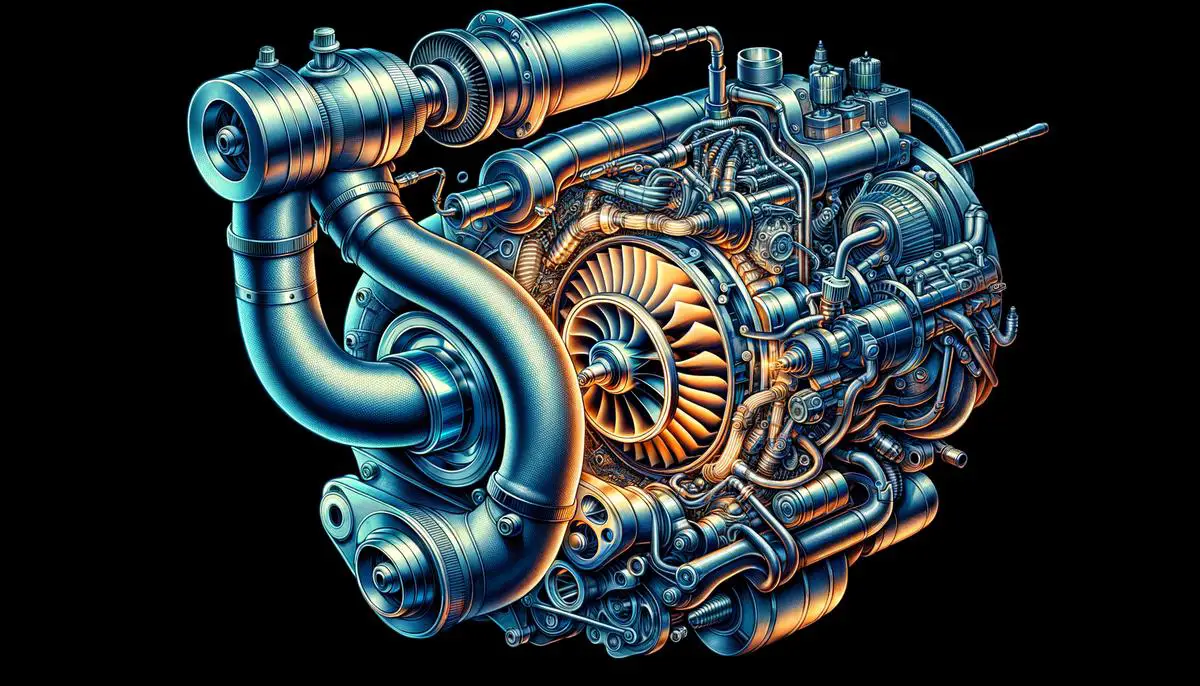As we navigate through the evolving landscape of automotive technology in 2023, our quest for engines that marry power with fuel efficiency becomes increasingly critical. The latest advancements in engine design are revolutionizing how we approach fuel consumption, promising a future where both the thrill of driving and environmental consciousness can coexist. This essay explores a trio of pioneering powertrains, each marked by their innovative approach to optimizing fuel usage. From Toyota’s groundbreaking Dynamic Force Engine to Chevrolet’s surprising Diesel Prodigy, and Tesla’s audacious entry with their Fully Electric Powertrains, we dive into the mechanical symphony that orchestrates their performance. These champions of efficiency illuminate the path toward a more sustainable driving experience without sacrificing the excitement behind the wheel.
Contents
The Hybrid Titan: Toyota’s Dynamic Force Engine
Ah, the sweet hum of a finely-tuned engine! As many aficionados would concur, the quest for efficiency under the hood is akin to the search for the holy grail. And guess who’s been leading the pack? Toyota, with its Dynamic Force technology, not just keeps up but sets the bar. Why are gearheads and eco-conscious drivers alike tipping their hats to this marvel of automotive ingenuity? Buckle up, we’re hitting the fast lane to efficiency enlightenment!
Revolutionary EngineeringWhere magic meets mechanics—that’s Dynamic Force for you. Engineered for the future, Toyota’s cutting-edge engines redefine thermal efficiency. By attaining an impressive thermal efficiency rate of 40% in gasoline engines and a jaw-dropping 41% in hybrids, these bad boys convert more heat into useful work. The result? More bang for your buck with every drop of fuel.
High Compression RatiosThink of compression ratio as the squeeze before the bang. It’s essential for power and efficiency. Dynamic Force ramps this up, using high compression ratios to ensure a more complete fuel burn. Better combustion means improved efficiency, and that’s exactly what these engines deliver, making every journey feel both powerful and frugal.
Lighter Moving PartsLess is more, especially when we talk about the weight of engine parts. Toyota’s wizards have carved out quite the advantage by employing lighter components. This means the engine doesn’t have to work as hard, reducing wear and tear and leading to improved fuel economy. With a featherweight champion under the bonnet, your car feels sprightly with every press of the pedal.
Direct and Port Fuel InjectionDouble the options, double the fun. Dynamic Force engines come equipped with not just one but two types of fuel injection: direct injection for power and port injection to reduce emissions. This harmonious blend allows the engine to operate in optimum conditions regardless of whether you’re cruising down the lane or gunning it on the highway.
Variable Valve TimingThe secret sauce for efficient engines comes down to when those valves dance. Dynamic Force employs intelligent variable valve timing, adjusting on the fly to match your driving demands. This means whether you’re coasting or planting your foot firmly on the accelerator, the engine timing adjusts accordingly, ensuring you get the most out of every revolution.
Revving Up the Green FactorConcerned about your carbon footprint but still enjoy the thrill of a spirited drive? Rest easy. The emphasis Toyota places on environmental sustainability reflects in their engines’ design, with reduced CO2 emissions taking center stage. Dynamic Force doesn’t just symbolize efficiency; it’s a nod towards a greener future.
In the vast universe of engine technologies, Toyota’s Dynamic Force motors are akin to a perfectly organized constellation – shining examples of what’s attainable when innovation drives forward. With a firm foot on the accelerator of efficiency, Toyota continues to charm enthusiasts who demand performance without compromising on Mother Nature’s well-being. Keep your eyes on the road ahead; the journey with Dynamic Force is bound to be exhilarating.

The Diesel Prodigy: Chevrolet Duramax 3.0L Turbo-Diesel
Chevrolet’s Duramax turbo-diesel engines are known for their remarkable fuel efficiency, impressing truck enthusiasts and industry experts alike. But how does this powertrain continue to lead the pack in miles per gallon without sacrificing performance? Let’s tap into the nuts and bolts of its efficiency secrets.
Advanced Air Management
The mastery of air flow plays a pivotal role in the efficiency of the Duramax engines. The sophisticated turbocharging system compresses the air that enters the engine, allowing for a denser charge. This increased air density means more oxygen is available for combustion, leading to a more complete burn of the fuel and less wastage. Additionally, the intercooling system cools the air after it’s compressed, which further enhances combustion efficiency.
Smart Exhaust Solutions
Typically, diesel engines might be seen as sooty and smoggy, but advancements in the Duramax’s exhaust system tell a different story. The inclusion of Diesel Exhaust Fluid (DEF) systems, also known as Selective Catalytic Reduction (SCR), is a game-changer. These systems inject DEF into the exhaust stream, turning noxious nitrogen oxides into harmless nitrogen and water. This technology not only reduces emissions but also allows for finer tuning of the engine to improve efficiency.
Engine Control Unit Optimisation
At the heart of the engine’s operation lies the Engine Control Unit (ECU), a type of electronic brain. Its optimization plays a crucial role in fuel economy. Duramax ECUs are calibrated to monitor a range of inputs like temperature, load, and speed, continuously adjusting the engine’s operation for peak efficiency. This precise control over the engine’s parameters ensures that fuel is used optimally under all driving conditions.
Strategic Weight Reductions
While lighter moving parts have been mentioned, it’s worth noting that the overall weight of the Chevrolet’s Duramax also influences its fuel efficiency. Strategic design decisions have been made to trim pounds wherever feasible without compromising on the rigidity and toughness, expected of a heavy-duty engine. Less weight means the engine doesn’t have to work as hard to move the vehicle, contributing to better fuel efficiency.
Use of Synthetic Lubricants
Reducing internal resistance is an often-understated factor in achieving better fuel mileage. Synthetic engine oils are utilized in Duramax engines due to their lower viscosity and superior lubricating properties. This means the engine’s components face less friction and operate more smoothly over a broader temperature range, reducing the energy lost to heat and wear while contributing to the engine’s overall efficiency.
Aerodynamic Assistance
Lastly, the vehicle’s body plays a supportive role in promoting fuel efficiency. While not part of the engine itself, better aerodynamics of the vehicles housing the Duramax engines contribute to reducing the drag force. With less resistance from the air as it travels, the amount of fuel needed to maintain speed on the highway is significantly reduced, boosting the fuel economy without directly altering the mechanics of the engine itself.
Harnessing an array of technologies and design strategies, Chevrolet continues to craft Duramax engines that deliver power without profligacy. Embracing an ethos of performance coupled with sustainability, Chevrolet ensures that every drop of diesel is a testament to the possibilities of modern automotive engineering.

The Electric Maverick: Tesla’s Fully Electric Powertrains
Advanced Air Management
Tesla’s fully electric powertrains stand out with their sophisticated air management systems. Unlike traditional internal combustion engines that rely on a mix of air and fuel for combustion, electric motors don’t require air to generate power. Instead, air management in a Tesla is all about thermal regulation and reducing drag, which directly impacts efficiency. The cooling systems keep the battery packs at an optimum temperature, ensuring peak performance and elongating lifecycle, while also cleverly channeling air around the vehicle to minimize resistance. This brings about a sublime harmony in maintaining powertrain health and boosting overall fuel efficiency.
Smart Exhaust Solutions
The absence of an exhaust system in Tesla’s powertrains may not be the first thing that springs to mind when considering fuel efficiency, but it’s a game-changer. Since electric vehicles don’t burn fuel, there are no emissions and no need for an exhaust system to expel waste gases. This simplifies the rear design of the car, reducing weight and contributing to a much smoother and more streamlined silhouette. This efficient design means there’s less drag while driving, which, coupled with the lack of exhaust pollution, truly redefines the driving experience.
Engine Control Unit Optimization
In conventional vehicles, Engine Control Units (ECUs) govern the intricate ballet of moving parts. For Teslas, the equivalent is the sophisticated software that manages the electric motor, battery, and ancillary systems. This software is continuously refined through over-the-air updates, enhancing the car’s performance and efficiency without any physical alterations needed. By optimizing how and when the electric motor draws energy from the battery, Teslas achieve a level of precision in powertrain performance that traditional ECUs struggle to match.
Strategic Weight Reductions
Tesla constantly seeks new ways to trim the fat without sacrificing structural integrity or passenger safety. Key areas of focus include the chassis and body panels, where materials like high-strength steel and aluminum play a pivotal role. But it’s not just about materials—it’s also about design. Tesla’s skateboard chassis, which houses the battery at the bottom of the vehicle, offers a dual benefit of lowering the center of gravity and reducing overall weight, leading to improved handling and efficiency.
Use of Synthetic Lubricants
The role of lubricants in a fully electric powertrain is fundamentally different from their role in traditional engines. While they still serve to minimize friction, the formulation of synthetic lubricants used in Teslas is tailored to the needs of electric motors and gearboxes. These advanced lubricants endure less degradation over time and maintain their properties across a wider temperature range, ensuring that the powertrain runs as smoothly and efficiently as possible.
Aerodynamic Assistance
Last but not least, Tesla’s focus on aerodynamics plays a crucial part in fuel efficiency. Every curve and contour is designed with the sole purpose of cutting through the air with minimal resistance. From the retractable door handles that lie flat against the body to the smooth underbody panels, each element serves to help the car slip through the air more efficiently. With a lower drag coefficient, energy consumption decreases which, in turn, increases the range—a primary concern for any electric vehicle enthusiast. Thus, Tesla’s design philosophy not only delivers an aesthetically pleasing vehicle but one that rides on the bleeding edge of efficiency.

The journey through the realm of fuel-efficient engines has introduced marvels of automotive technology that offer a glimpse into the future of driving. The Toyota Dynamic Force Engine, the Chevrolet Duramax 3.0L Turbo-Diesel, and Tesla’s Fully Electric Powertrains each stand as a testament to the innovation and dedication of their creators. These engines represent not only the pinnacle of current technology but also the promise of a greener, more thrilling drive. They serve as beacons for drivers and manufacturers alike, illuminating the possibilities that arise when ingenuity meets the relentless pursuit of improvement. The engines of 2023 spell out a clear message: efficiency need not come at the expense of performance or enjoyment. As the automotive industry continues to evolve and adapt, these powertrains set the standard for what we can expect from the cars of tomorrow.



